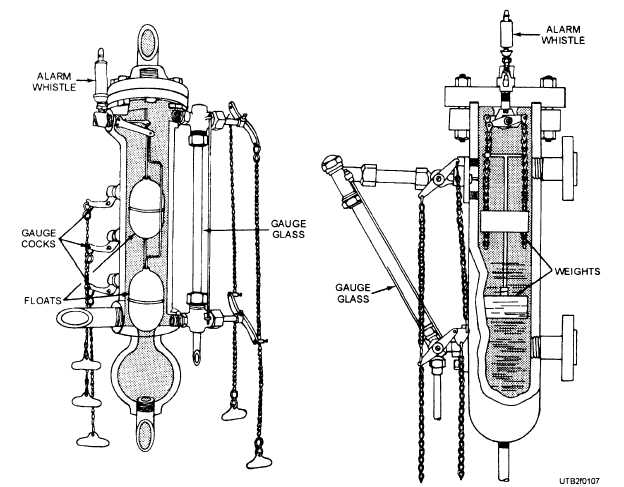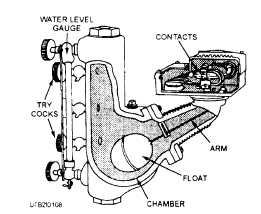
Figure 1-7. - Typical water columns.

Figure 1-8. - Combination float and mercury switch type of feedwater control.
reacts to changes made within a maintained water level by breaking or making a complete control circuit to the feedwater pump. It is a simple two-position type control, having no modulation or differential adjustment or setting. As all water level controllers should be, it is wired independently from the programmer. The control is mounted at steaming water level and consists of a pressurized float, a pivoted rocker arm, and a cradle-attached mercury switch. The combination float and mercury switch type of water level control functions as follows: As the water level within the boiler tends to drop, the float lowers. As the float lowers, the position of the mercury switch changes. Once the float drops to a predetermined point, the mercury within the tube runs to its opposite end. This end contains two wire leads, and when the mercury covers both contacts, a circuit is completed to energize the feedwater pump. The pump, being energized, admits water to the boiler. As the water level within the boiler rises, the float rises. As the float rises, the position of the mercury switch changes. Once the float rises to a predetermined point, the mercury runs to the opposite end of its tube, breaking the circuit between the wire leads and securing the feedwater pump. The feedwater pump remains off until the water level again drops low enough to trip the mercury switch.
Continue Reading